Antarctica — more than something to tick off your bucket list Part 2

This continues Dale’s adventure to Antarctica. You can read part one of her story here.
Continuing on my fantastic Ross Sea expedition… We are now approaching the Ross Sea.
We skipped a day — a dateline thing. With 24 hours of daylight, life was timeless; day merged into night, hours became irrelevant, as did the days of the week. We skipped a day or two here and there. Who cared? The only regular event was our meals, although they often had to fit around our activities, and the only definite was the time we were to land in Bluff, New Zealand, at the end of our journey. One on board, an engineer, was quite disturbed as our clocks did not agree with his iPad’s version of the time. It all goes to prove that days are just human-imposed tags and have no relevance.
In brilliant sunshine and blue skies, with the ice reflected, blue as blue, in the perfectly calm mirror surface of the sea, we zig-zagged through the flows, and finally turned south-west around midday. We crossed the pack-ice and entered the Ross Sea. One final thick onslaught, then a band of sparse ice, and then… Nothing!
Just clear water with a gentle swell.
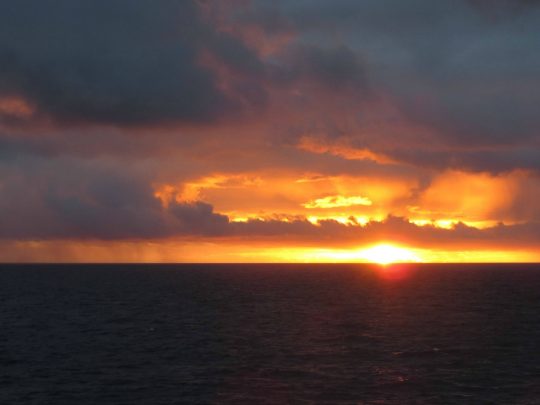
One morning, I awoke at 3am and my cabin was filled with an orange glow. The porthole looked like it was on fire. I grabbed my camera and went on deck and there was no one else. Just me and the sunrise — as it turned out, the last sunrise we would see for the next two weeks, as the sun remained above the horizon.
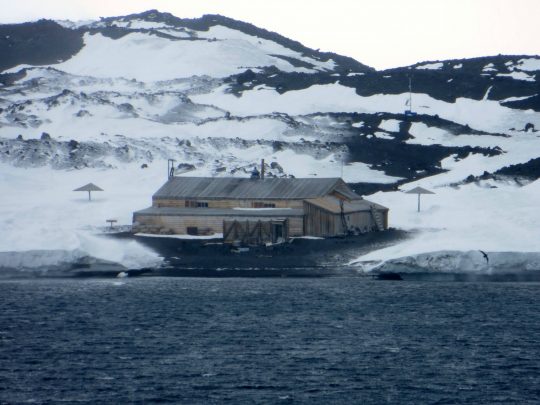
On day 19 we rounded Cape Evans, and there was no difficulty picking out Scott’s Terra Nova hut, standing proud, right on the water-line. By now the temperature had dropped to -12C with 35 knot winds, giving an effective temp of -25C.
I dressed in all my layers: two thermal tops and bottoms; a skivvy; polar fleece jacket; goose-down jacket; corduroy pants; three pairs socks; hydronought overcoat; rainpants; balaclava and beanie; two pairs gloves; rubber boots. No glasses, as they only fogged immediately I put my balaclava over my nose.
The spray froze immediately it hit the air. Gangplank, the guides, deck, bottom of Ortelius and Zodiac were all covered in ice. With a 2m swell, I grabbed the arm of the guide in sailor’s grip and jumped when she said jump, trusting the side of the Zodiacwould line up with the step as I leapt into the gap. It did. I thought, ‘Gees, anyone who knows me wouldn’t believe this!’ I slipped on the icy floor and had a job getting up to sit on the side of the Zodiac, but we all helped each other.
I like to travel alone if the situation promises a challenge. No one knows my limitations, no one has expectations or pre-conceived notions. It is entirely up to me whether I can do something. Instead of limiting my activities, solitary travel tends to give me courage.
In front of the hut, we scrubbed our soles clean and took off our salty coats in the little entrance, then entered another world. I felt like I was intruding on someone’s home — as if they had just stepped out…
The place and surrounds had an awe-ful beauty, despite the katabatic winds pushing down from Mt Erebus. The atmosphere of the hut was very sombre; perhaps I was influenced by the knowledge that Scott and his party left this hut, reached the pole in 1912, but didn’t return.
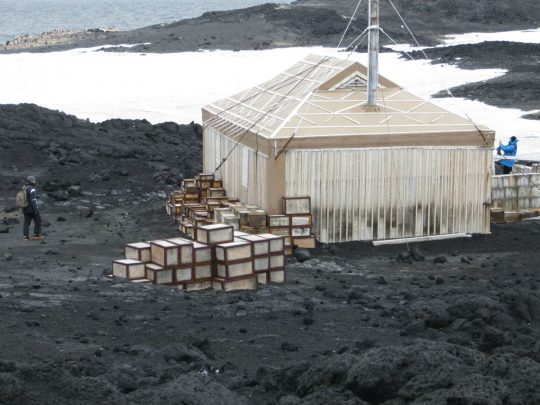
We started off early the next day to visit Shackleton’s Nimrod hut on Cape Royds. Now this is just the right sort of hut.
Whereas Scott had divided officers and gentlemen from seamen, Shackleton maintained open-plan quarters, and the hut seemed the friendlier for it.
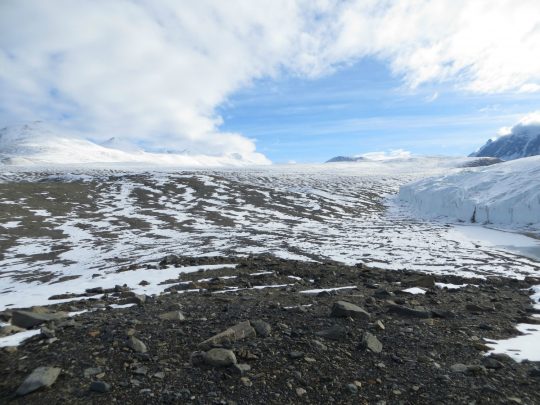
Just when I thought it couldn’t get any better we flew by helicopter into the Taylor Dry Valley.
It has never rained or snowed in the dry valleys. It is the driest place on earth, more akin to Mars. As soon as the helicopter left, everything was absolutely quiet. I stayed 3 hours, wandering the valley floor looking for fossils, but all I found was a mummified seal that could have been a thousand years old. I sat on a rock, with a perfect bum-shaped depression worn over thousands of years by the wind. I felt totally at home.
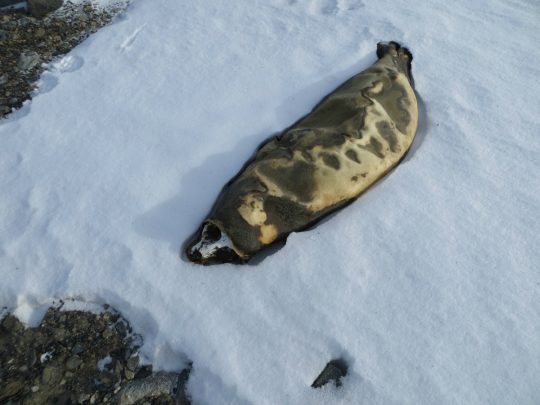
The last hut for us to visit was the oldest, another of Scott’s—the Discovery hut built in 1902. Scott had fallen in love with the outback homesteads of Australia and ordered a kit replica be built. But there was a design fault—why would you build a home with a verandah in Antarctica? They soon discovered its failings, and slept for two years on their ship, using the hut as a storeroom and place to escape occasionally.
This hut sits alone on Hut Point, but when you do a 180-degree turn, what you see is McMurdo US Base. A truly ugly place. In all, we anchored five days in McMurdo Sound. The scenery was stunning.
I found it difficult to tear myself away from the ever-changing light and beauty in order to go to bed. Taking a hot chocolate onto the bridge helped. It became a pleasant tradition.
The day came, as I knew it must, when we turned Ortelius around and headed north. I felt an overwhelming sadness at leaving Antarctica behind. Greg said he feels the same every time.
To be continued…








 Proudly Australian owned and operated
Proudly Australian owned and operated